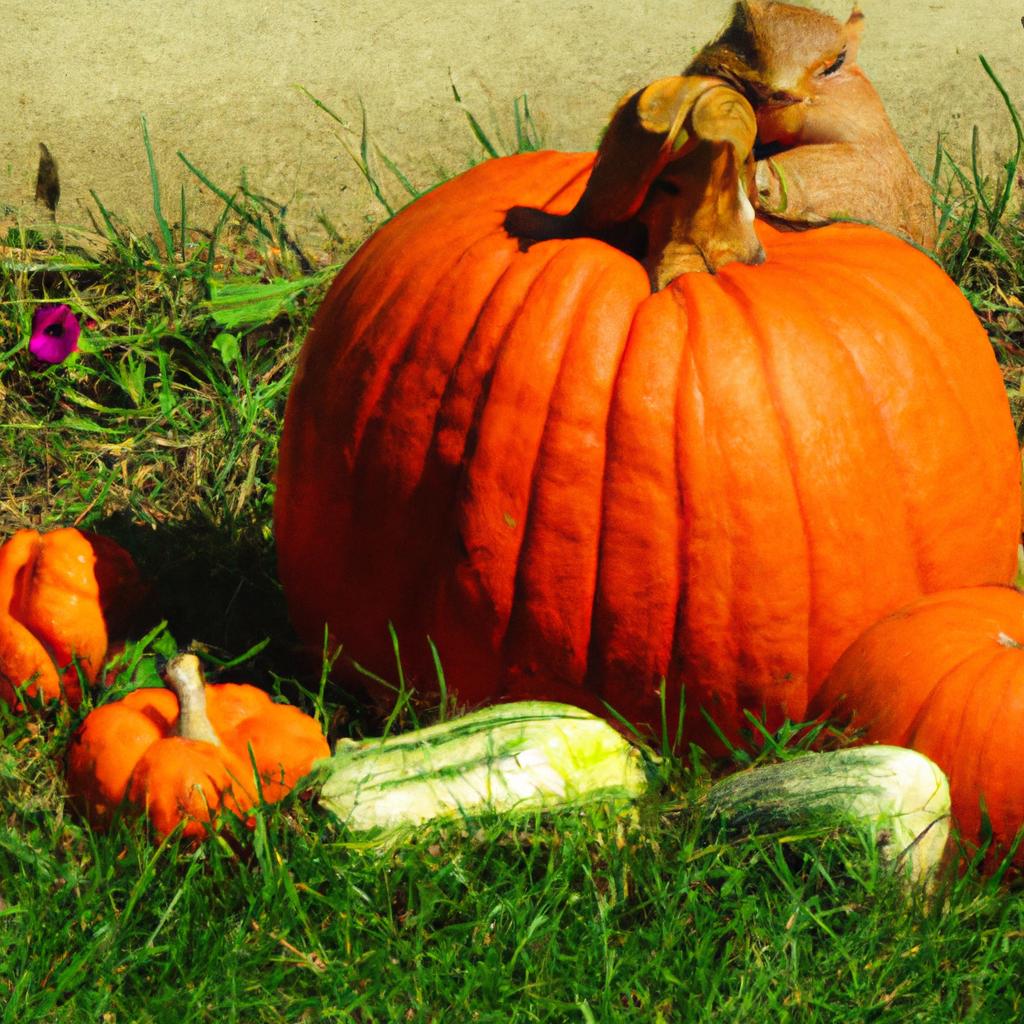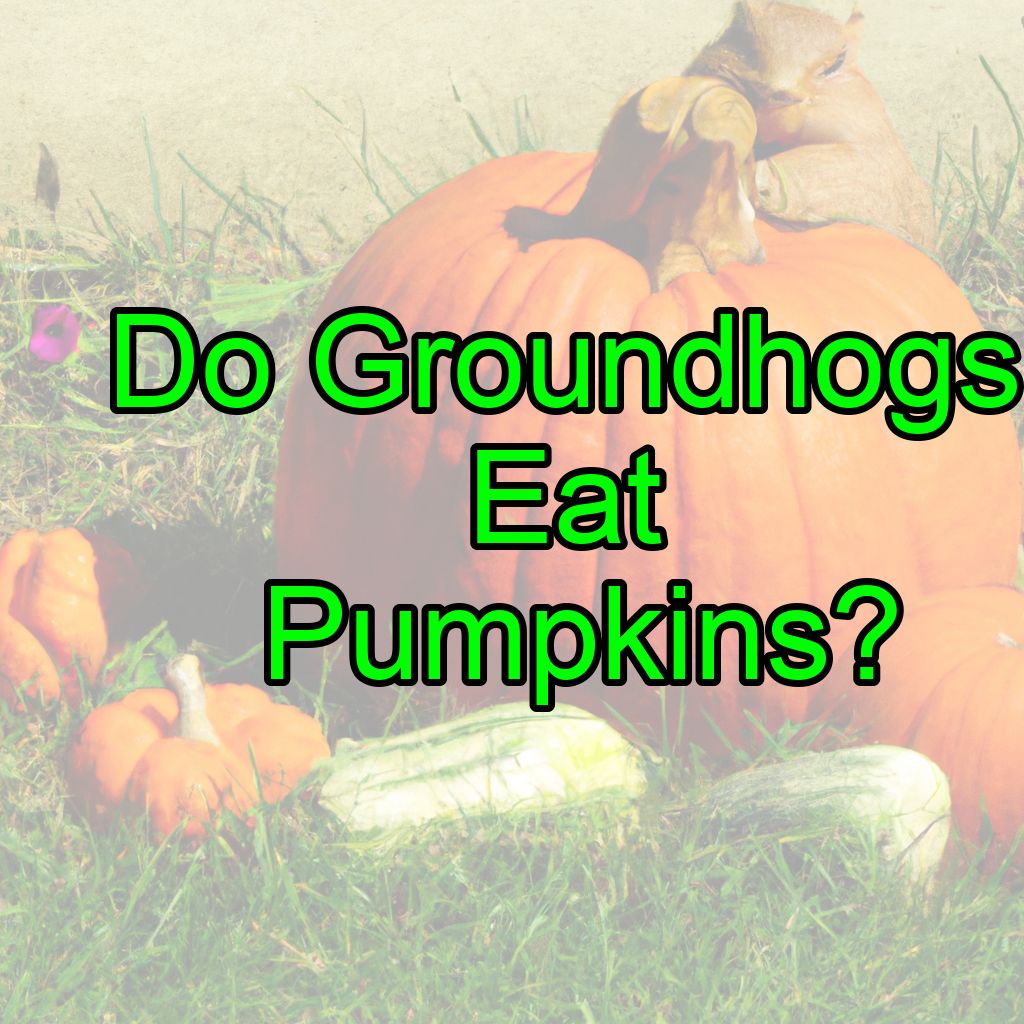As a backyard gardener, I have often wondered if groundhogs eat pumpkins.
Yes, groundhogs do eat pumpkins. They are known to consume various parts of the pumpkin plant, including the leaves, stems, and the fruit itself. To protect your pumpkins from groundhogs, consider using fencing, repellents, or live traps to deter or relocate these animals.
Pumpkins are a staple of fall decorations and also a popular food item.
So, it’s important to know if groundhogs will be attracted to my garden and devour my pumpkins.
The short answer is yes, groundhogs do eat pumpkins.
However, it’s important to understand the nuances of how and why they eat pumpkins.
Contents
The Food in Question: Pumpkins
Pumpkins are part of the Cucurbitaceae family, which also includes squash, cucumbers, and melons. Pumpkins are a popular food item for both humans and animals.

They are rich in nutrients such as fiber, potassium, and vitamin C.
When do Groundhogs Eat Pumpkins?
Groundhogs are active during the day and mainly eat in the morning and late afternoon. They are herbivores and will eat a variety of plants, including pumpkins.
Groundhogs are known to eat the flesh, seeds, and leaves of pumpkins.
How do Groundhogs Eat Pumpkins?
Groundhogs have strong teeth that are perfect for gnawing on tough plant material.
They will use their front teeth to bite through the tough skin of the pumpkin and then use their molars to chew the flesh.
They will also eat the seeds and leaves of the pumpkin, which are softer and easier to chew.
Why do Groundhogs Eat Pumpkins?
Groundhogs eat pumpkins for the same reason they eat other plants. Pumpkins are a good source of nutrients and provide groundhogs with the energy they need to survive.
Also, pumpkins are easy to find in the fall, making them a convenient food source for groundhogs.
Implications for Backyard Owners
If you are a backyard owner, you should be aware that groundhogs may eat your pumpkins. If you want to protect your pumpkins, you can try covering them with a wire mesh or placing them in a raised bed.
However, keep in mind that groundhogs are excellent climbers, so you may need to cover your entire garden with wire mesh.
Other Animals that Might Eat Pumpkins
Groundhogs are not the only animals that might eat your pumpkins.
Other animals that may be attracted to pumpkins include deer, raccoons, and squirrels.
These animals may also cause damage to your garden, so it’s important to be aware of their presence and take appropriate measures to protect your pumpkins.
How To Keep Groundhogs Out Of Your Yard!
There are several things that can be done to prevent groundhogs from digging and eating stuff in your backyard. I will list some of the strategies below.
Also, see my recent post if you want a full list of my favorite methods to keep groundhogs and gophers away!
1. Using ultrasonic sound
Groundhogs, like other bigger mammals that may invade your garden, tend to have very good hearing. This means that loud or consistent noises will scare them away or at least shorten their visits.
Check out my full buying guide for these ingenious ultrasonic repeller devices here!
One of my favorite technologies to keep pests away from my backyard is these cool solar-powered ultrasonic sound emitters that you can buy right from Amazon! In my experience, they really work, and the solar panels on top save you the time and money of changing batteries all the time.
They will also work against other rodents like gophers, mice, and rats!
2. Sprinkling natural repellents
Groundhogs may be scared off by using natural scents such as coyote urine or predator scents.
They may also cause them to leave if there is a combination of sounds being played from a radio. The sounds include the sound of barking dogs and coyotes.
You can sprinkle dog hair, cayenne pepper or strong enteric oils and other natural repellents around the garden to keep the groundhogs away.
See my complete list of humane ways to keep groundhogs away from your yard for more tips and tricks!
3. Fencing around the garden
You can also fence around your garden to keep groundhogs from entering the garden. It should be at least 3 feet deep and have a double row of fencing.
Groundhogs are good diggers so it has to go underground or they may find a way into the garden even with the fences in place!
4. Using live traps
You can use a live trap to capture groundhogs and move them to another area. Live trapping is currently the most humane way of groundhog control. Once you have removed all groundhogs from an area, it is important to ensure that they do not come back by using fencing or other barriers to block access.
You can also just buy a live trap, as the sturdy metal ones shown here:
To lure the groundhogs in, you can use one of the numerous favorite foods of groundhogs or an optimized extra attractive formula like this one to make the catch even quicker!
5. Using natural pesticides
There are pesticides or rodent toxins that can be used to kill groundhogs on your property. These may also affect other animals in the area so it is important to ensure that they are only sprayed on the targeted plants.
I do not recommend these, as I prefer more humane ways as described here. Also, anything that kills an animal will also harm humans to some degree, so go for a repellant rather than a toxin if you go the chemical route!
6. Using Scarecrows
You can use a scarecrow in your garden to keep groundhogs away. Groundhogs are afraid of novelty so time-sensitive or motion-activated scarecrows may also be effective in keeping them out of the garden.
7. Using Lights
Groundhogs are not strictly nocturnal animals but they are most active at low light so they do avoid areas with bright lights.
Motion-activated lights, sounds, and sprinklers may help prevent groundhogs from entering your yard.
Any blinking light will confuse and scare away groundhogs from your yard, especially if they are motion activated and sudden!
8. Motion-activated sprinklers
Like most animals, groundhogs hate surprises, and they will run away if suddenly sprayed with water. I like this solution because it is humane, simple, effective, and does not require much time to set up.
The Havahart 5277 is a motion-activated sprinkler that is activated by the movement of animals up to 25 feet away and sprays them with a harmless water jet, frightening them off and keeping them at bay.
The included metal stake makes it easy to install in your garden, and the sprinkler can be rotated 180 degrees for maximum coverage.
## Conclusion
In conclusion, groundhogs do eat pumpkins, but they are not the only animals that might be attracted to your garden.
If you want to protect your pumpkins, you should take appropriate measures to deter these animals.
However, it’s important to remember that these animals are simply looking for food and are not trying to cause harm to your garden.
By being aware of their presence and taking appropriate measures, you can enjoy your pumpkins without worrying about them being eaten.















